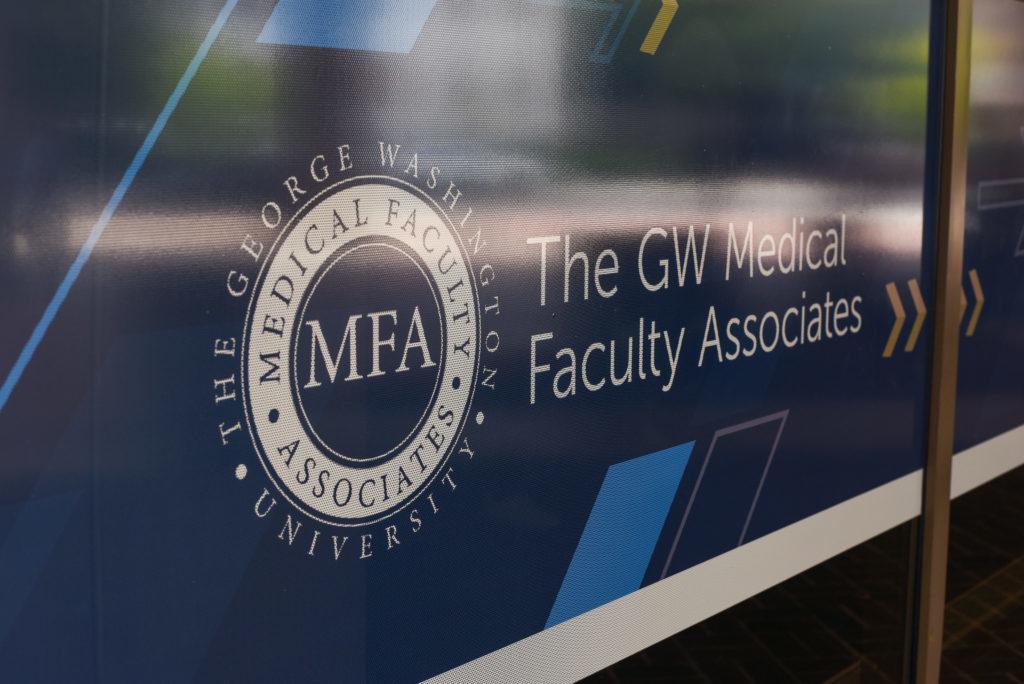Three Medical Faculty Associates surgeons earned more than $1 million in fiscal year 2018 amid a jump in patient revenue bills, according to financial disclosures.
The MFA, a nonprofit network of doctors practicing in the D.C. area who teach students in the School of Medicine and Health Sciences, made about $425 million in revenue during the fiscal year spanning July 2017 to June 2018 but incurred about $450 million in expenses. The Internal Revenue Service requires organizations claiming tax-exempt status, like the MFA, to detail financial information – including top employee compensation, assets and liabilities – annually on a Form 990.
Top compensated employees
Warren Yu, the chief of the spine section of the Department of Orthopedic Surgery, was the highest compensated MFA employee in fiscal year 2018. He earned $1,795,431, according to the documents.
Yu, Paul Massimiano – a cardiothoracic surgeon who made $1,063,571 – and Michael Rosner – a neurosurgeon and the vice chairman of the department who was compensated $1,022,642 – were the only employees out of 2,644 total to make more than $1 million.
MFA spokeswoman Barbara Porter said the MFA Board reviews and sets compensation for top physicians annually.
“The Board of the MFA weighs independent data gathered by doing market comparisons with similar health care organizations in similar geographic areas in setting its leadership compensation,” Porter said in an email.
Health care experts said compensation for top medical officials is primarily driven by demand in the field and the physician’s talent.
Andrew Hajde – a senior industry adviser at the Medical Group Management Association, which provides resources to health care executives and facilities – said market comparisons are typical in determining appropriate compensation levels.
“In many cases, they’re using an independent, fair-market-value evaluation to determine compensation amount – looking at everything from the geographic area to the number of physicians in that area of that specialty to the productivity of the physician to what they’re expected to produce,” he said.
He added that compensation for physicians in and near the District is elevated compared to some regions not on the coasts because D.C.’s population density drives demand and the area has a high cost of living, which pushes wages up.
Kevin Grant, an accountant at the Tulane Center for Clinical Neurosciences, said surgeons’ salaries typically consist of both a fixed amount and the revenue they generate from their procedures.
“Their base salary is guaranteed,” Grant said. “If they are the residency director or in some sort of administrative position, they get paid through a base salary. Supplemental salary is all based on production, the number of patients they see and what kind of dollars they’re generating for the school.”
Yu’s nearly $1.8 million salary included $1.35 million in base compensation and $423,931 in bonus pay, approximately the same as the previous year. Massimiano received a $1 million base salary and no bonus pay, while Rosner was paid a $725,000 base salary and $286,842 in bonus compensation, according to the documents.
Grant added that some top doctors and surgeons bring in higher demand and publicity to health care practices by attracting lots of patients, which may cause officials to provide additional bonus compensation.
“There’s also a demand piece to it as well,” Grant said. “Our top surgeon, there is high demand for him, so he’s paid at the top higher than what he can produce.”
Yu, Massimiano and Rosner were compensated more than all of the MFA’s top executives. Robert Kelly, the CEO and treasurer of the group, received $938,685 during his first full year in his role. GW restructured its relationship with the MFA last December, which granted the University the power to approve the organization’s annual budget and appoint its CEO.
Kelly’s salary is about 13 percent lower than the compensation paid to former CEO and treasurer Stephen Badger, who made $1,078,631 during his last full year, according to past disclosures. The documents detail severance payments to Badger, which totaled $850,000 over two years.
Porter, the MFA’s spokeswoman, said officials determine compensation for senior administrators by considering a “multitude of factors,” like the market rate, experience and employee qualifications.
Revenues from patient care
The MFA brought in $429 million from health care programs and patient bills, a nearly 11 percent increase from the previous year, according to the documents. Porter declined to say why the increase occurred or how the increase will affect the MFA’s operations moving forward.
Hajde, the senior industry adviser, said the increase is a “little bit surprising” because many revenue streams for the group, like payments from Medicare, remain fairly constant and only increase by “minuscule” amounts year after year. The growth is likely because of an increase in patients seen, he said.
“I would say most typically, it’s because of growth of the number of visits, which even if the population hasn’t grown, it’s usually an aging population that is driving more people to the doctor,” he said.
Insured through Cayman Islands
The financial documents show that the MFA’s physicians, residents and interns receive liability insurance coverage, which protects them financially from malpractice lawsuits, through MFA Physicians Insurance Company, which is headquartered in the Cayman Islands.
Porter declined to say what the relationship is between the MFA and the insurance company, or why the company is domiciled in the Cayman Islands.
Hajde said the arrangement is not typical in his experience, but officials are likely taking steps to ensure that the company provides similar liability protection, as is typical for a company based in the United States.
“I’ve actually not personally seen a practice before that has had malpractice insurance based outside of the United States that I’m aware of,” Hajde said. “But I can’t really see any reason why a practice might pursue that other than if there’s a cost savings associated with it.”





